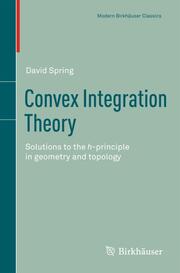Detailansicht
Convex Integration Theory
Solutions to the h-principle in geometry and topology, Reprint of the 1998 Edition, Modern Birkhäuser Classics
ISBN/EAN: 9783034800594
Umbreit-Nr.: 1585236
Sprache:
Englisch
Umfang: viii, 213 S.
Format in cm:
Einband:
kartoniertes Buch
Erschienen am 09.12.2010
Auflage: 1/2010
€ 53,49
(inklusive MwSt.)
Nachfragen
